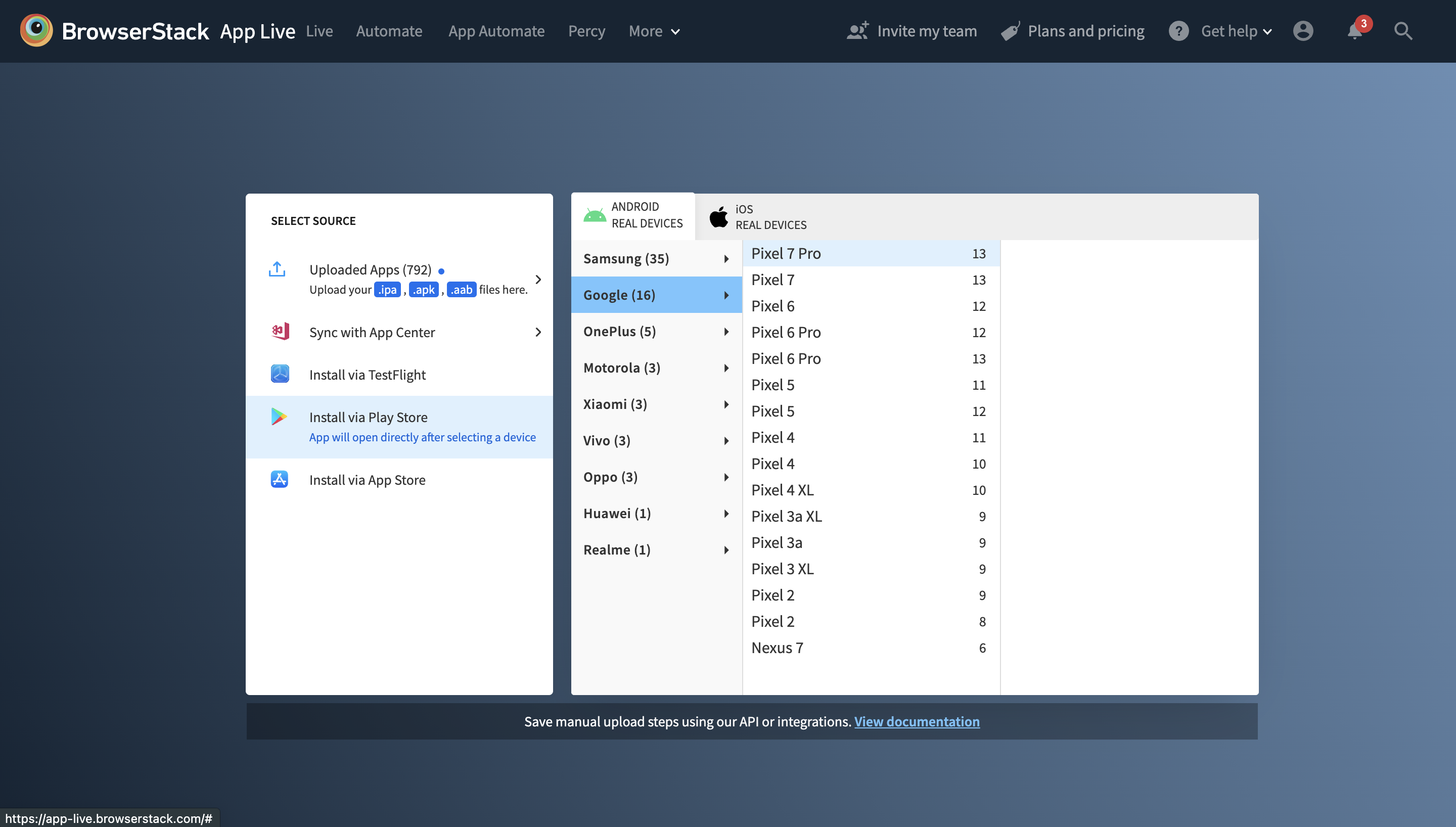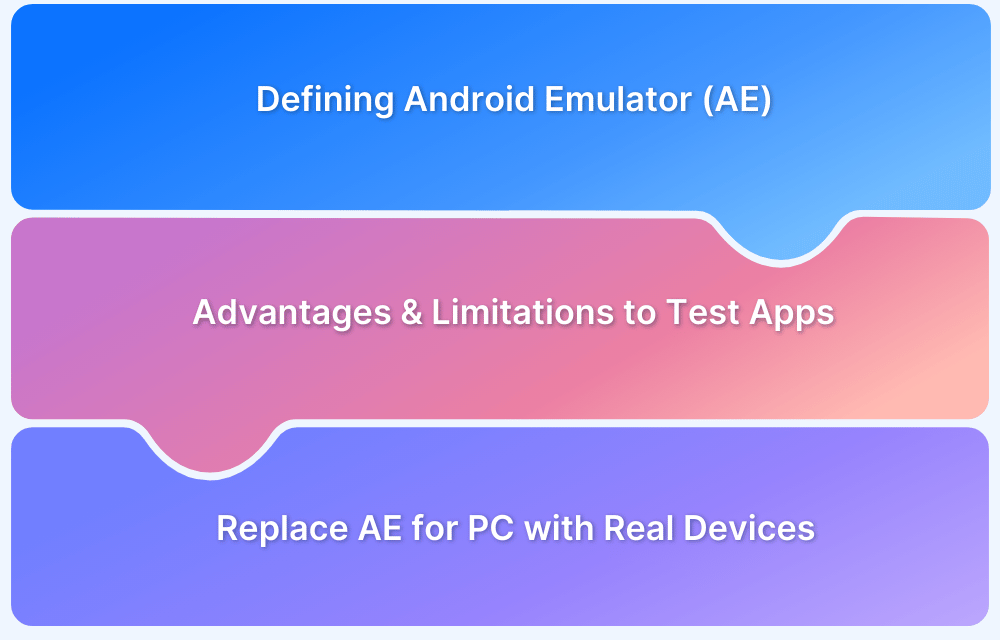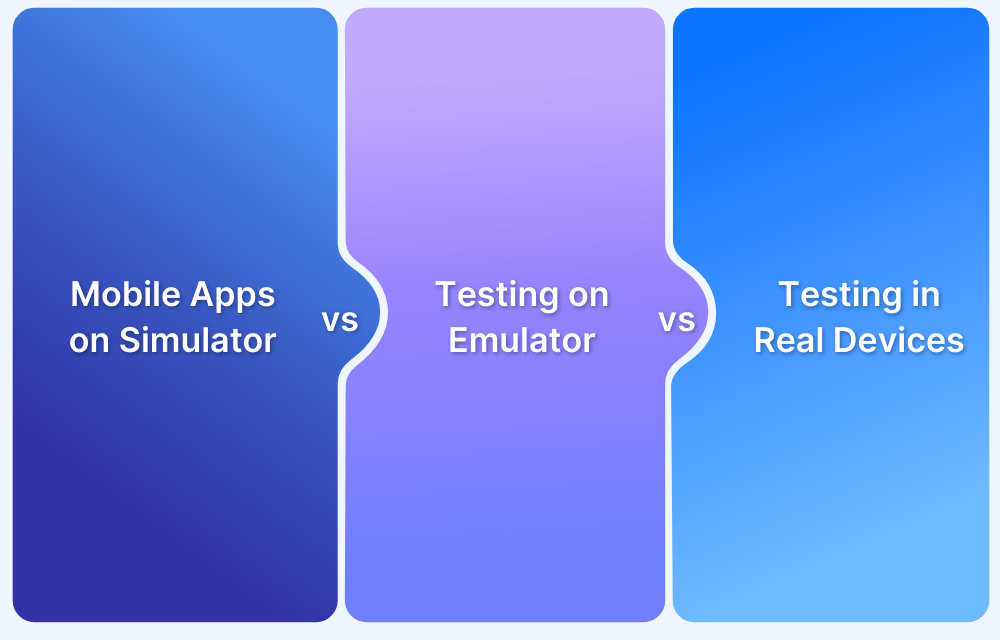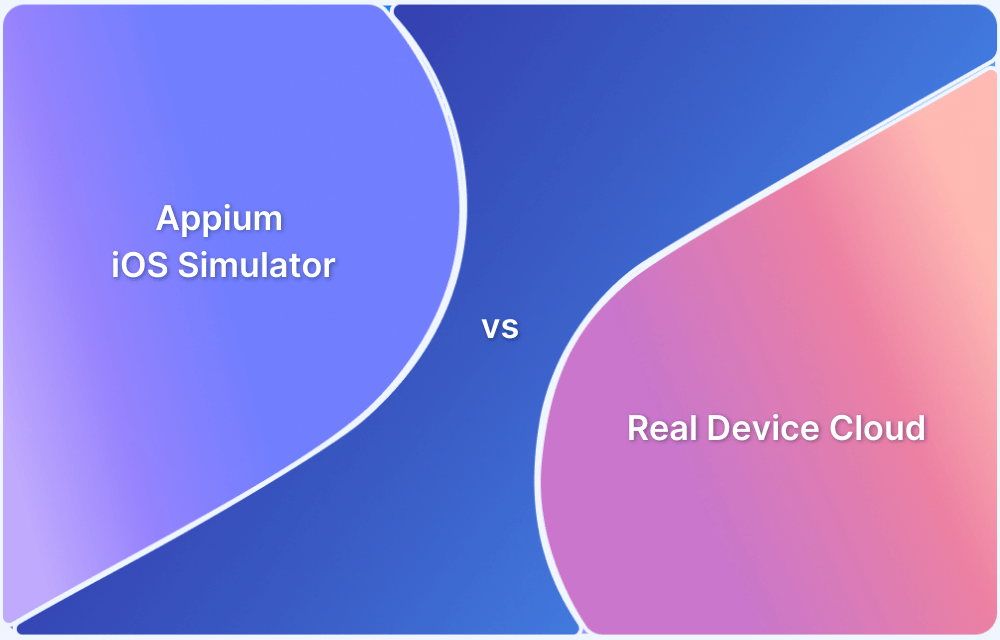What is the best Alternative for Emulator/Simulator?
By Jash Unadkat, Community Contributor - January 19, 2023
The ever-increasing demand for mobile apps in possibly every sector makes it critical for developers to launch apps faster. Launching apps and their features faster helps organizations maintain an edge over their competitors. However, teams need to ensure that their apps are market ready and compatible with the latest handsets before rolling out.
For testing mobile apps, developers and QAs commonly use Android emulators and iOS simulators. However, testing on emulators and simulators is inadequate for developing market-ready apps. This article explains the reasons why they are not adequate, and it also aims to describe the best Android emulator alternative. Let’s begin with the fundamentals.
What is an Android Emulator?
An Android emulator is a software program that allows QAs to run mobile apps and games on a desktop or laptop. They provide a way to test and develop mobile apps on a computer without needing a physical device. They mimic the functionality of a physical Android device and include features such as the ability to simulate touch and gesture input and access to the device’s hardware sensors.
The Android emulator simulates the Android operating system and its associated hardware, such as a device’s CPU, memory, storage, and sensors, allowing developers to test their apps on different versions of Android and various device configurations.
What is an iOS simulator?
An iOS Simulator is a built-in tool within the Xcode IDE for macOS. It allows developers to simulate and test their iOS, watchOS, and tvOS apps on a computer, rather than on a physical device. The simulator is designed to closely mimic the behavior and performance of an actual iOS device, including support for various screen sizes and resolutions, accelerometer, camera, and other hardware features.
The simulator also allows developers to test their apps in different software configurations, such as iOS versions of different device orientations. It is a valuable tool for developers to quickly test their apps and identify and fix bugs without needing a physical device.
Although emulators and simulators allow mimicking the functionality of a real device, there are several disadvantages to it testing mobile apps.
Disadvantages of Emulators/Simulators
- Emulators and simulators do not accurately mimic the performance of a real device, so testing on them may not reveal all performance-related issues that may occur on actual devices.
- They may not have all the features and capabilities of real devices, which can lead to incomplete testing.
- Emulators and simulators are not always updated to the latest mobile operating system version, which can lead to testing on outdated software.
- Emulators and simulators may not be able to test certain hardware-dependent features such as camera, GPS, and sensors.
- Emulators and simulators cannot test real-world conditions such as network conditions, battery level, etc.
- 6. It is not possible to test the apps with different resolutions, in-built apps, and other features unique to the device.
- Emulators and simulators cannot test the apps for different languages, time zones, and other localization settings.
- Testing on emulators and simulators does not replace the need for testing on actual devices, so it is important to also test on various real devices to ensure the app is working correctly across different hardware and software configurations.
What is the best Android emulator alternative?
An ideal alternative to Android emulator is using a real Android or iOS mobile handset basis the application under test. This allows for testing on actual hardware and can provide a more accurate representation of how the app will perform on a user’s device.
- Testing on real handsets provides a more accurate representation of how the app will perform on a user’s device, including real-world network and performance conditions.
- However, it’s not feasible for all organizations to procure and maintain the latest handsets of all brands and configurations.
- It demands significant investment for setting up on-premise device labs or device farms.
What’s the Solution?
To address the test infrastructural challenges, teams can leverage platforms like BrowserStack for testing apps in real user conditions. Its real device cloud offers 3000+ real devices and browser combinations. Additionally, it allows developers to run automated tests on multiple devices simltaneously, saving time and resources.
It offers devices from leading vendors like Samsung, Apple, OnePlus, Motorola, Google, etc.
To begin app testing on BrowserStack, one needs to:
1. Sign up for free on BrowserStack.
2. Upload your app (.ipa or .apk file) Learn how to upload .aab, .apk, and .ipa files.
3. After uploading the app, choose the desired device for debugging/testing purposes (Pixel 7 Pro, in this case).
4. An App-live session begins immediately once you select the device. The image below represents an App-Live session on Pixel 7 Pro.
Your test app is immediately installed once the session starts. That’s how quickly you can start testing your apps on BrowserStack.
The real device cloud allows mobile QA teams to test in real environments. It helps teams to yield accurate test results. With this Android emulator alternative, QAs also get access to the following features:
- Perform Geolocation testing for apps
- Test apps in Portrait and landscape mode
- Test the performance of apps in poor network conditions
- Conduct screenshot testing of apps for security concerns
- Test the app’s behavior in different languages.
With a secure and comprehensive test infrastructure available, teams can improve their test coverage and release apps faster.
Note: With the recent updates in BrowserStack’s real device cloud, teams can now test apps on the all-new Pixel 7 & iPhone 14 through their web browsers.
Closing Notes
- Using an Android emulator or iOS simulator is suitable in the initial stages of testing applications. However, it is not an accurate method when it comes to testing mobile applications in a fragmented ecosystem.
- Leveraging BrowserStack as an Android emulator alternative makes it extremely intuitive and effortless for teams to test applications on the desired device-OS combination regardless of the operating system you use.
- Simply Signup > upload your apps > choose the desired device, and start testing from anywhere in the world.
Go beyond browser/OS compatibility and test under real user conditions with BrowserStack.




